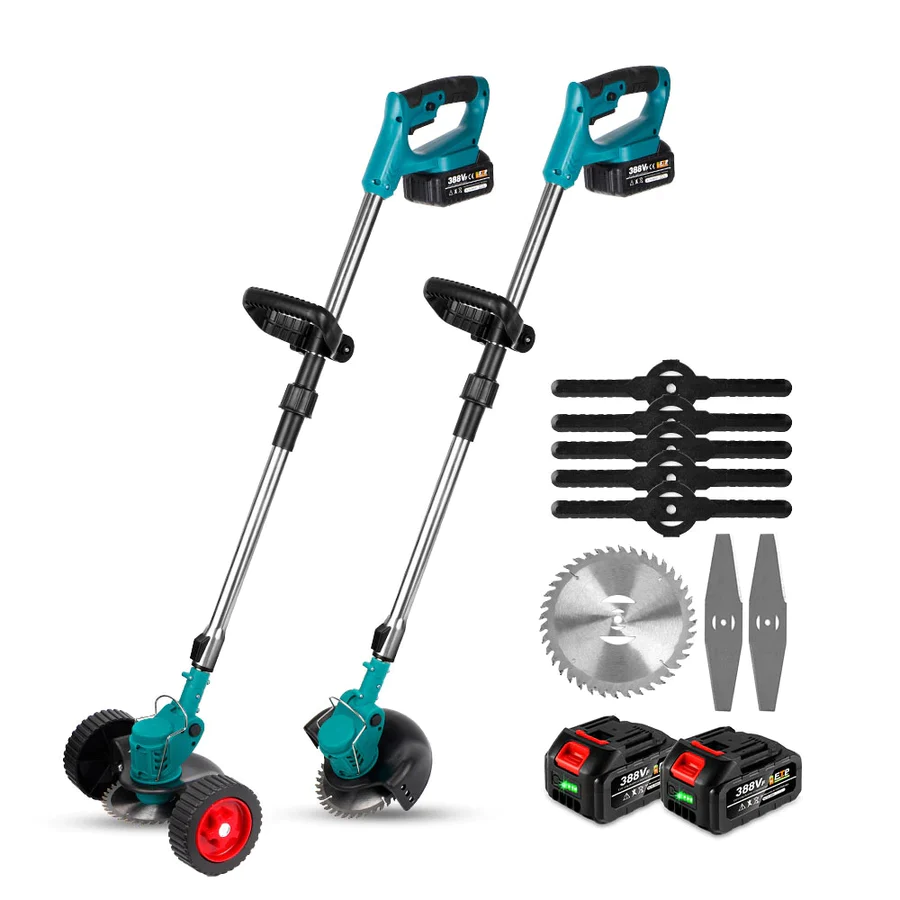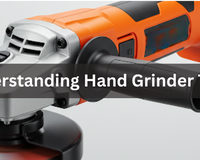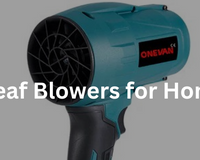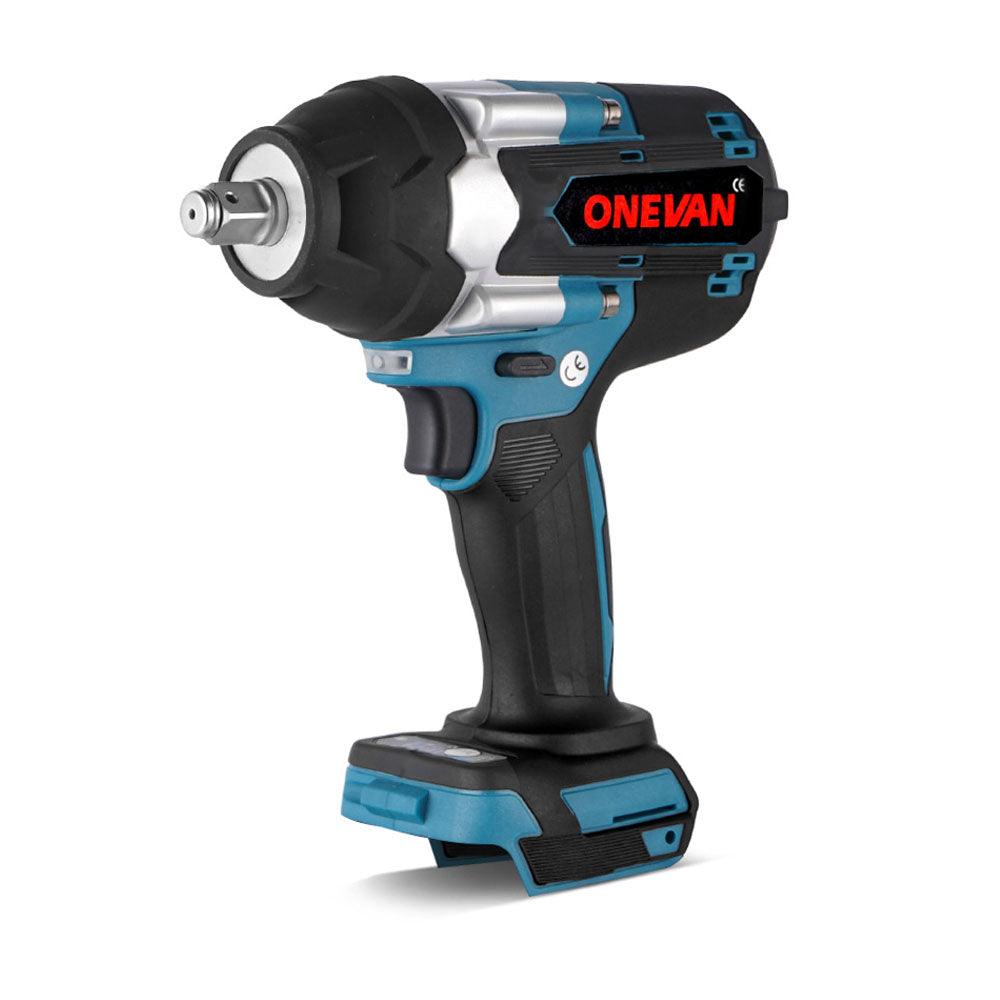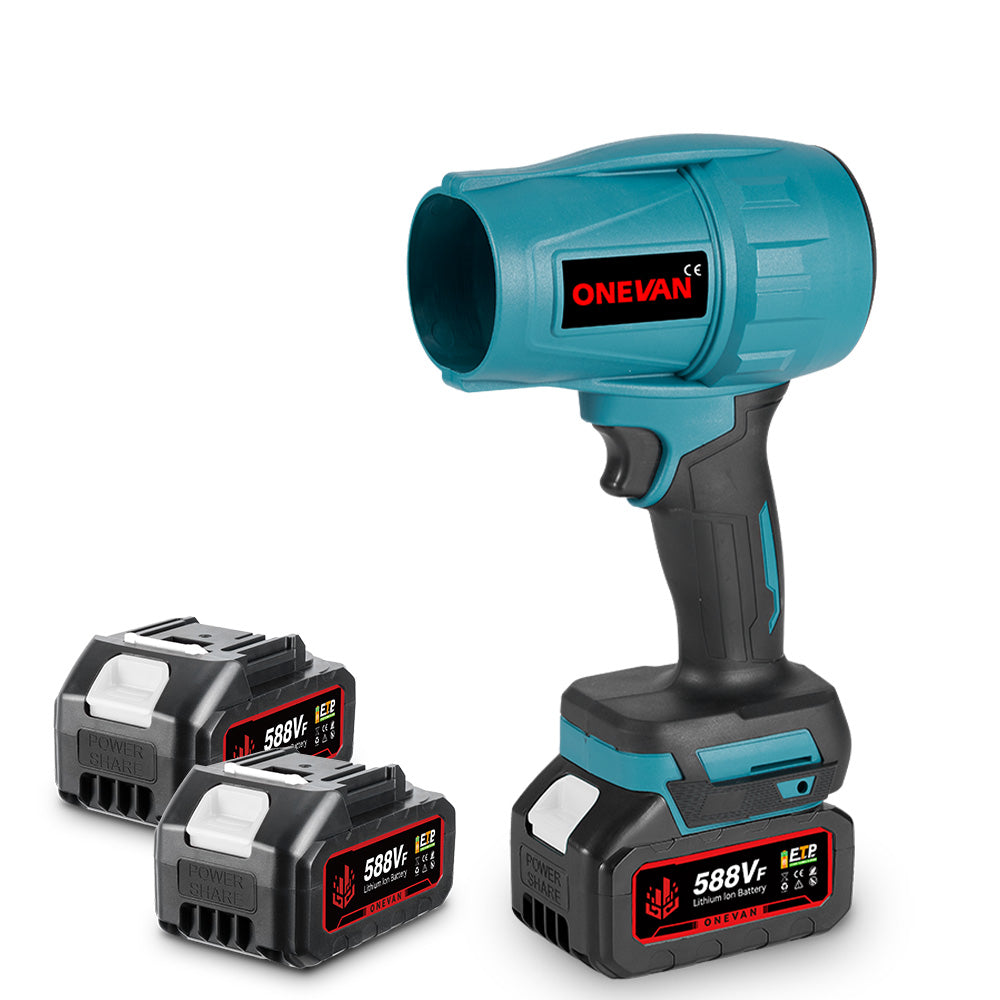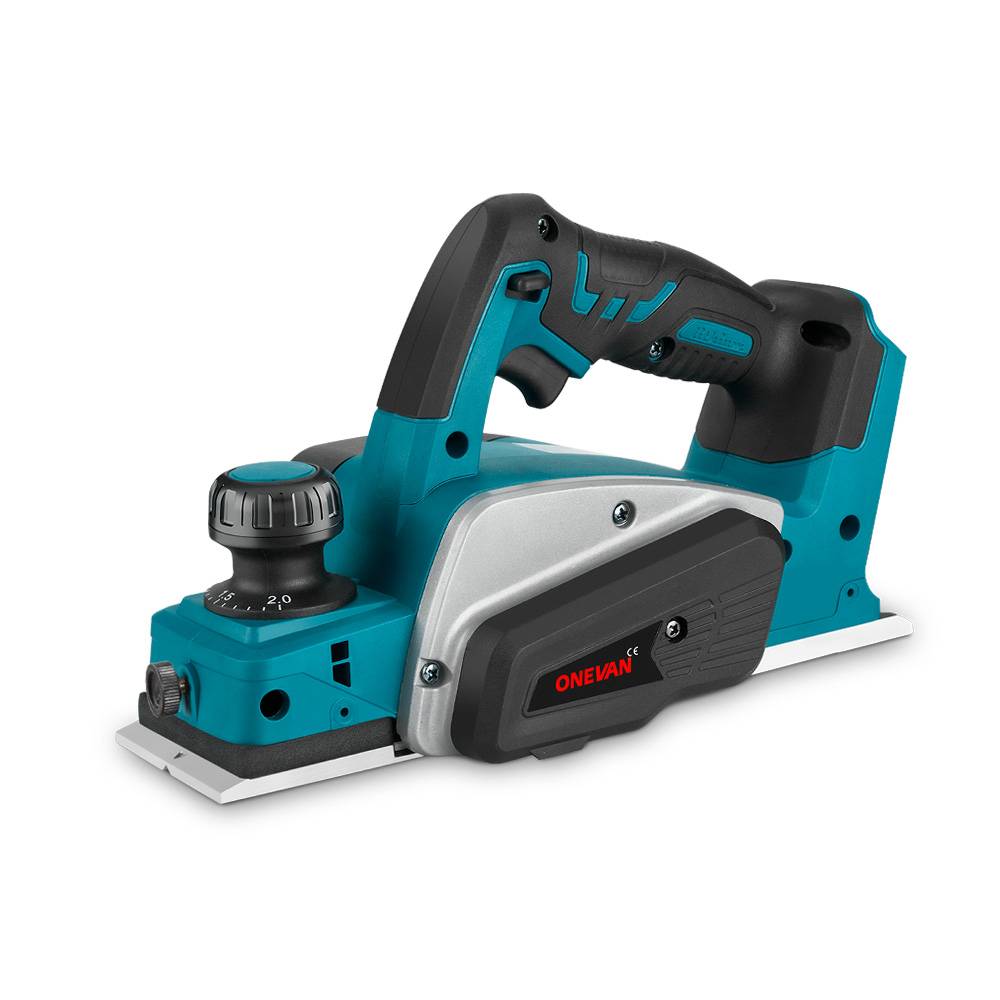1. Introduction
Properly storing your lawn mower in the garage is crucial, not just for organization, but for extending its life, ensuring it works well, and protecting it from damage and weather.Allocating garage space for your mower protects your investment from weather and rust, prevents accidental damage, and maintains its efficiency for future use. This means it will be ready to use with minimal maintenance.By giving your lawn mower a designated space, you are strategically improving and extending the performance and lifespan of your lawn care equipment.
2. Cleaning and Maintenance Before Storing Your Lawn Mower
2.1 The Right Way to Clean Your Lawn Mower
- Take off the Spark Plugs: Before beginning any cleaning or maintenance, ensure the lawn mower is off and cannot start by removing the spark plugs. This safety measure prevents accidental ignition during the cleaning process, mitigating risk to you and the equipment. When using a cordless lawnmower, this issue isn't as significant. Simply make sure to switch off the power for safety.
- Blade Cleaning: Detach the blades with appropriate tools, taking care to handle them safely to avoid injury. Clean off grass clippings, dirt, and rust from the blades using a stiff brush and soapy water. Dry thoroughly before reattaching to prevent rusting.
- Cleaning Exhaust and Ventilation Areas: Remove any debris clogging the exhaust or ventilation spaces. Use a small brush or compressed air to clear out these areas, ensuring optimal airflow and preventing overheating during operation.
- Lubrication: Apply suitable lubricant to moving parts including the blades, wheels, and any levers or cables. Regular lubrication ensures smooth operation and reduces wear and tear on the mower's components.
- Discard Used Gasoline: If your mower runs on gasoline, drain any fuel left in the tank at the end of the season. This prevents the gasoline from going stale and causing issues with the engine. Dispose of the gasoline by local regulations.
- Change the Oil: Replace old oil with fresh oil to ensure the engine runs smoothly. Check the manufacturer's guide for the correct type and amount of oil. Used oil should be disposed of responsibly.
- Checking for Wear or Damage: Inspect the mower for any signs of wear, such as cracks, rust, or deterioration. Pay special attention to the belts, cables, and tires. Replace any parts that are damaged or worn out to maintain optimal performance.
- Final Check: Once cleaning and maintenance are complete, give the lawnmower a thorough inspection to ensure all parts are reattached correctly and securely. Double-check that there are no loose screws or unsecured blades, as these could pose a significant safety hazard when the mower is next used.
2.2 Battery Care for Electric Lawn Mowers
Proper battery maintenance is critical for extending the life and maintaining the efficiency of electric lawnmowers. The type of battery your lawn mower uses, whether lead-acid or lithium-ion, will dictate the specific care and maintenance procedures. Here's a detailed guide to ensure optimal performance and longevity of your electric lawn mower's battery.
- Understanding Battery Types and Their Needs: Electric lawnmowers offer two primary battery options: lead-acid and lithium-ion. Lead-acid batteries, though economical, demand regular maintenance such as monitoring electrolyte levels and ensuring clean terminals. Conversely, lithium-ion batteries provide hassle-free operation but require cautious handling to extend their lifespan. Additionally, explore cordless lawnmower models for seamless operation. Cordless lawnmowers offer powerful brushless motors for smoother mowing, resistance to high temperatures, and an extended lifespan.
- Proper Disconnection Techniques: Before removing the battery, switch off the lawn mower and disconnect the mower's power unit. Use gloves and tools with insulated handles when disconnecting the battery to reduce the risk of electrical shock. For lead-acid batteries, always disconnect the negative (-) terminal first, followed by the positive (+) terminal to minimize the risk of short-circuiting. For lithium-ion batteries, follow the manufacturer's guidelines for disconnection to avoid damaging the battery management system.
- Cleaning and Maintenance: Keep the battery terminals clean and free from corrosion. For lead-acid batteries, you can clean the terminals with a solution of baking soda and water, then rinse with clean water and dry thoroughly.
- Storage Conditions: Store the battery in a cool, dry place, away from direct sunlight and extreme temperatures. Extreme cold can reduce the battery's ability to hold a charge, while extreme heat can accelerate the degradation of the battery cells. An ideal storage temperature range is between 40°F to 70°F (5°C to 20°C). For long-term storage, lithium-ion batteries should be charged to around 50% of their capacity to maintain battery health.
- Charge Management: Avoid overcharging the battery. For lead-acid batteries, use a charger that automatically switches to a trickle charge mode once the battery is fully charged. For lithium-ion batteries, using the manufacturer-provided charger will safeguard against overcharging. It's also recommended not to store batteries fully charged for long periods, as this can stress the battery and reduce its lifespan.
2.3 Preventing Rust: Lubrication Tips
Establish a Lubrication Routine
Setting up a consistent lubrication routine is vital for keeping your lawnmower running efficiently and preventing rust. This means deciding on specific intervals—such as before the mowing season begins, midway through, and before winter storage—to apply lubricant to necessary parts of your mower.For example, lubricating your mower before it sits idle during the off-season can protect it from rust and ensure it's ready to go when the season starts again. Regular lubrication reduces friction among moving parts, leading to less wear and a longer life for your mower.
Choose the Right Lubricant
Not all lubricants are created equal, and using the wrong type can do more harm than good. Manufacturers often recommend specific lubricants that are best suited for their machines. For instance, a general machine oil is typically fine for most parts of a lawnmower, but there are instances where a high-temperature grease or a silicone-based lubricant might be more appropriate, especially for parts exposed to high levels of friction or heat. Check your mower's manual or consult with a professional to get advice on the best product for your needs.
Pay Attention to Key Components
Focus your lubrication efforts on the mower's most critical areas. Pivot points, cables, wheel axles, bearings, and the mower deck should be your primary targets. These parts are more susceptible to wear and rust, especially if they're not regularly maintained. For example, the mower deck is constantly exposed to moisture from the grass, which can lead to rust if not properly lubricated. By ensuring these key areas are well-lubricated, you'll not only prevent rust but also keep your mower running smoothly.
Cleaning Before Lubricating
Applying lubricant to dirty or grass-covered parts can cause more problems than it solves. Dirt and clippings can stick to the lubricant, turning it into a grinding paste that wears away at moving parts. Before you apply any lubricant, make sure the parts are clean and dry. This might mean using a soft brush or cloth to remove dirt and debris. For example, after mowing, take a few minutes to clean off the mower deck and wheels before applying lubricant. This ensures the lubricant can do its job without interference from dirt.
Avoid Over-Lubrication
While lubrication is important, too much can be just as bad as too little. Excess lubricant can attract dust, dirt, and grass clippings, which can lead to a buildup that hampers the functioning of moving parts. Apply lubricant sparingly, ensuring it penetrates the necessary areas without leaving residue that can attract debris. For example, when lubricating the mower's cables, a few drops of oil at each end are usually sufficient. After application, run the mower for a few minutes—if possible—to help distribute the lubricant evenly.
3. Finding the Best Spot for Your Lawn Mower in Your Garage
3.1 Space Optimization in the Garage
To fit a lawn mower in your garage, you need a smart plan. This way, you can store this key garden tool without losing space for your car or other storage needs. To achieve this, consider utilizing vertical storage options, such as wall-mounted racks or hoists, especially for collapsible mowers. This approach not only preserves floor space but also maintains a clutter-free environment. For example, a foldable lawn mower can be hung on a sturdy wall bracket during the off-season, freeing up valuable ground space for other uses.
3.2 Ensuring Easy Access and Safety
When placing your lawn mower in the garage, focus on making it easy to access and safe for everyone. Choose a location where you can easily get the mower in and out without moving other things around or blocking the way. A good spot is near the garage door but out of the main walking path. Make sure the mower is stable to avoid tipping and injuries. Also, keep it out of reach from children and use child-proof measures if needed.
3.3 Protecting the Lawn Mower from Environmental Damage
Selecting a storage spot in the garage that shields your lawn mower from environmental elements such as dust and moisture can significantly extend its usability and lifespan. Areas that are prone to dampness or water leakage should be avoided. Implementing dehumidifiers in humid regions can prevent corrosion and rust. For instance, placing the mower on a raised platform can protect it from flood damage, while using a breathable cover can prevent dust accumulation without trapping moisture.
3.4 Considering Environmental Conditions
The microenvironment within your garage, including aspects like humidity, temperature fluctuations, and ventilation, directly impacts the optimal location for storing your lawn mower. Poor ventilation can lead to the accumulation of gasoline fumes, if your mower is gas-powered, posing health risks and potential fire hazards. Therefore, a well-ventilated area, possibly with natural airflow or mechanical ventilation, is advisable. Additionally, maintaining a moderate and stable temperature can prevent the mower's metal components from contracting and expanding, which may cause wear over time.
3.5 Creative Solutions for Organization and Storage
Maximizing garage organization through innovative storage solutions can ease the challenge of finding the best spot for your lawn mower. Using overhead shelves for mower accessories, such as bags or chargers for electric models, keeps them within reach but out of the way. You can adjust shelving units or cabinets to fit different lawn tools and accessories, keeping your space neat and organized. Hooks and brackets are also great for dual use, letting you store the mower up off the ground and hang garden hoses or cables.
3.6 Maintaining Access Routes
Proper lawn mower storage is key to keeping a safe and efficient space. It's important to store the mower in a way that doesn't block garage entrances, exits, or essential emergency paths. This is crucial for both organization and safety. Regularly checking your garage's layout helps prevent any blockages or hazards that could impede movement or access. The aim is to keep paths clear and safe for easy navigation and emergency exits. A good approach is to create a designated ‘equipment zone’ for the lawn mower and other machinery, away from doorways, walkways, and emergency exits. This reduces the chances of accidents and helps organize your equipment, improving safety.
3.7 Convenient Storage of Tools and Accessories
Having an organized space for your lawn mower tools and accessories can make a big difference in how efficiently and effectively you can maintain your lawn. It's all about keeping everything you need within reach so that when it's time to mow the lawn or perform maintenance on your mower, you're ready to go without any delays. One smart way to organize is by dedicating a specific area for storing these items. This could be a drawer, a storage box, or a shelf that's used only for your lawn care tools and accessories. To enhance organization, set up a pegboard near your lawn mower storage. Hang hooks on it, labeling each for a different tool, ensuring everything has its place and is easy to locate. For example, label hooks for items like mower blades, spark plugs, and wrench sets. Place this setup near your lawn mower to keep tools handy and make your lawn care routine more efficient.
4. Protecting Your Lawn Mower During Storage in the Garage
4.1 Covering Your Lawn Mower Properly
- Choose the Right Cover: Think about getting a lawn mower cover or a durable waterproof sheet. It'll keep the dust off and stop rain damage. A cover also helps avoid scratches, keeping your mower looking good for a longer time. This easy move can help your lawn gear last longer and stay in better shape.
- Pick Breathable Fabric: Use a cover that allows air to flow freely. This helps prevent water from staying underneath the cover because when water stays trapped, it can cause rust on metal things or make mold grow on surfaces. For example, if you cover a bicycle with a tight plastic sheet, rainwater might not dry out and could make the bike parts rusty. Instead, use a cover with tiny holes that let air in and out, keeping the bike dry and safe from rust or mold.
- Cover Every Part: Ensure that the cover envelops the entire mower, with particular attention to the bottom components. By doing so, you guarantee that every part of the mower is fully protected against any moisture or dust, preventing rust and prolonging the life of your equipment. This simple step is important for maintaining your mower in optimal condition, ready for use whenever needed.
4.2 Keeping Pests at Bay During Storage
Utilizing Desiccants for Moisture Control
To reduce the risks from too much moisture, use desiccants like silica gel packets around your stored lawn mower. They pull moisture from the air, significantly lowering humidity. Lower moisture levels prevent pests, which love damp areas, from gathering. Keeping the area dry helps protect your lawn mower from damage by making it less inviting for pests.
Applying Pest Repellent Sprays
The strategic use of non-toxic pest-repellent sprays around your lawn mower acts as a deterrent for a variety of pests, including rodents and insects that might be tempted to gnaw on wires or other mower parts. These repellents, when chosen carefully to be safe for use in enclosed spaces, can provide a protective barrier without posing health risks to humans or pets. Apart from that, opting for a cordless lawn mower is a game changer. This way, pests won’t have to gnaw on wires and you won’t have to worry about your lawnmower being damaged. Regular application as per the manufacturer’s instructions ensures a consistent level of protection throughout the storage period.
Ensuring Adequate Ventilation
Adequate ventilation within the storage space plays a pivotal role in preventing pest infestations. By facilitating air circulation, you decrease moisture levels and create an environment less hospitable to pests. Ventilation systems, whether natural or mechanical, should be inspected and maintained regularly to ensure their efficacy. This approach not only helps in keeping pests at bay but also aids in preventing the accumulation of harmful fumes or odors that can arise from stored equipment, including the lawn mower.
Conducting Regular Inspections
The importance of regular inspections cannot be overstated when it comes to preventing pest infestation during storage. These inspections should focus on both the stored lawn mower and the entirety of the storage area. By identifying signs of pests early, you can take immediate action to address any issues before they escalate. This proactive measure is essential for maintaining the condition of your lawn mower, ensuring that it remains in a state of readiness for its next use. Regular checks also allow for the timely replacement of desiccants and the reapplication of pest-repellent sprays, maintaining a consistent defense against pests.
5. Maintenance Your Lawn Mower During Storage in the Garage
5.1 Regular Checks
Set up a routine to examine your mower every month or so. This means looking it over for any signs of wear or damage. Regular checks help catch small problems before they turn into big ones. For example, you might notice a loose bolt or a fraying belt that can be easily fixed now instead of causing trouble later.
5.2 Battery Care
To ensure your mower's battery longevity, monitor its charge level meticulously. A battery that remains uncharged for an extended period can become permanently unusable. It's advisable to charge it periodically throughout the winter months. Furthermore, maintain the battery's cleanliness, diligently removing any signs of corrosion to prevent damage.
5.3 Keeping Things Moving Smoothly
All the parts that move should be oiled or greased to stop them from getting rusty or stuck. This is like putting lotion on dry skin—it helps keep everything moving smoothly. For instance, oil the wheels and any levers to make sure they're easy to use when spring comes.
5.4 Fuel System Maintenance
Regularly inspecting the fuel system not only prevents potential damage but also ensures that your mower operates efficiently. To do so, examine the fuel lines for cracks or wear, look for any signs of fuel leakage around the engine, and sniff for any strong odors that might indicate evaporation or contamination of the fuel. If you find that the fuel has indeed gone bad, it's essential to drain it safely and refill the tank with fresh fuel, following the manufacturer's guidelines. This routine maintenance will keep your mower running smoothly and extend its lifespan.
5.5 Tires and Pressure
Flat or damaged tires significantly impact performance. To ensure your mower operates efficiently, it's crucial to regularly check that the tires are properly inflated, without cracks, and not excessively worn out. A simple way to check tire pressure is by using a tire pressure gauge; this will help you maintain the optimal pressure as recommended by the mower's manufacturer. Additionally, visually inspect the tires for any signs of wear, cracks, or damage.
5.6 Screws and Bolts
Before using your mower, conduct a thorough inspection to tighten any loose screws or bolts. Start by checking the handle and moving down to the deck and wheels, using a wrench or screwdriver appropriate for your mower's model. A loose bolt, much like a missing button, might not seem significant at first glance but can lead to more severe issues, such as parts becoming detached or the mower malfunctioning during use.
5.7 Cleanliness
Dust and dirt have a way of accumulating on your mower, even when it's tucked away in storage. To ensure it remains in top condition, it's important to regularly wipe it down or brush off any accumulated grime. This maintenance step is akin to dusting your home furniture - not only does it keep the mower looking its best, but it also contributes to its longevity.
5.8 Checking Rubber and Plastic
Rubber hoses and seals, as well as plastic components in various machines and devices, are prone to cracking or breaking over time. It's important to inspect these parts regularly and carefully. If you notice any signs of weakness, such as small cracks or areas that seem brittle or damaged, it's important to replace them immediately to prevent further damage or failure of the device. Think of it like checking the elastic bands on your clothes for signs of wear and tear – if the elastic is stretched out or fraying, it's time for a replacement to ensure everything works properly and stays in place.
5.9 Engine Tests
Remember to start your lawn mower periodically to keep the engine running smoothly, just like regular exercise helps keep us healthy. This simple step ensures the engine remains in good condition. However, it's crucial to never run it in a closed space due to the danger of carbon monoxide poisoning. Instead, always do this in an open area where the exhaust can disperse safely. To perform engine tests, first make sure you're outdoors or in a well-ventilated space. Check the mower's fuel and oil levels, and top them up if necessary. Then, firmly push the start button or pull the start cord. Let the mower run for a few minutes. Listen for any irregular sounds and observe if it runs smoothly. Doing this regularly helps maintain your mower's engine and prevents issues from developing.
6. Conclusion
Effectively storing your lawn mower with meticulous care isn't just about prolonging its life; it's an investment in ensuring its reliability and performance for many seasons to come.By incorporating the outlined steps—from regular checks to engine maintenance—into your routine, you can prevent common issues that lead to costly repairs or replacements.We encourage all readers to adopt these strategies, not only to safeguard the longevity of your lawn mower but also to enjoy a consistently well-maintained lawn.Remember, a little effort in maintenance can result in considerable savings and satisfaction in the long run.
If you are searching for a top-notch lawnmower, One Van Tool provides a wide variety of cordless lawnmowers that are built to last long. The company offers top-of-the-line mowers with durable batteries and powerful engines, ensuring a reliable and efficient mowing experience.
7. FAQ
1. Is it safe to store lawnmowers in the garage?Yes, it is generally safe to store a lawn mower in a garage, provided you take a few precautions to minimize risks. First, make sure the mower is clean and free of grass clippings or debris. Ensure that the fuel tank is either empty or tightly sealed to prevent leaks or fumes from accumulating. Additionally, store the lawn mower away from any source of heat or flame, such as water heaters or furnaces, to avoid fire hazards.
2. How do you store lawnmowers when not in use?Storing lawnmowers when not in use requires a series of straightforward steps to prevent damage and ensure longevity. First, clean the mower thoroughly to remove dirt, grass clippings, and debris. Next, drain or stabilize the fuel to prevent the degradation of the engine's internal components. Check and clean the air filter, and change the oil if necessary. Sharpen the blades to ensure they are ready for the next use, and lubricate moving parts to prevent rust. Store the mower in a cool, dry place such as a garage or shed, away from direct sunlight and moisture. Make sure the storage area is well-ventilated to prevent the buildup of fumes if the tank contains fuel. Lastly, cover the mower with a tarp or mower cover to keep it clean and protect it from dust. Following these steps will help maintain your lawnmower's condition during the off-season.
3. Is it better to store lawn mower with or without gas?It is generally better to store your lawn mower without gas in the tank if it will not be used for 30 days or more. Storing it without gas helps prevent the ethanol in the gasoline from decomposing and causing damage to the engine's internal components. If draining the gas is not an option, adding a fuel stabilizer to the tank before storage can also protect the engine. This approach minimizes the risk of starting issues and prolongs the lifespan of your lawn mower. Always ensure that the storage environment is safe and that all precautions are taken to reduce the risk of fire.
4. Can I hang my lawn mower?Yes, storing your lawn mower vertically against a wall saves space, especially in small garages or sheds. But, you need to be careful to do it safely and avoid damaging your mower. Check your lawn mower's manual first to make sure vertical storage is okay for your model, as some have special needs because of their fuel or oil systems. Before you hang it up, take out any fuel and clean it well to stop leaks or spills. Use strong hooks and wall mounts built to hold your mower's weight, and make sure they're properly fixed to the wall.
5. Can I store my lawn mower vertically?Yes, you can store your lawn mower vertically, but only if the manufacturer’s guidelines specifically state that such storage will not harm the engine or other components. Consult your mower's user manual or contact the manufacturer to confirm whether vertical storage is advisable for your particular model. This method can save significant space in your garage or shed, but it’s crucial to ensure it’s done in a way that doesn’t lead to oil or fuel leakage.
6. Where can I store my lawn mower without a garage?>If you don't have a garage, you can store your lawn mower in a shed, under a waterproof cover that breathes, or in any outdoor storage you have, as long as the place is dry, well-ventilated, and secure to keep it safe from the weather and theft. A shed is great because it keeps out rain, snow, and extreme temperatures. However, if you can't use a shed, a high-quality, waterproof cover is a solid alternative. Remember to clean the mower well before you put it away and check the manufacturer’s instructions to make sure it's ready for a break from use.
7. Does a lawn mower need to be covered?It's a good idea to cover your lawn mower to keep it safe from dust, moisture, and rust when you're not using it, especially if you store it outside or in places like sheds that don't have temperature control. A cover keeps the mower clean and stops debris from clogging it up, which can cause damage over time. Choose a cover that's both breathable and waterproof to protect against moisture without trapping condensation underneath, as this can lead to rust and other issues. Taking this extra step when storing your mower can help it last longer and stay in great shape for its next use.
8. Should you cover your lawn mower?Yes, covering your lawn mower is highly recommended. A cover protects the mower from dust, moisture, and accidental damage, particularly if stored outdoors or in unconditioned spaces like sheds or barns. Using a breathable, waterproof cover helps to prevent rust and corrosion by keeping the mower dry while allowing condensation to evaporate. This simple practice can significantly extend the life and performance of your lawn mower, ensuring it remains ready for use season after season.

